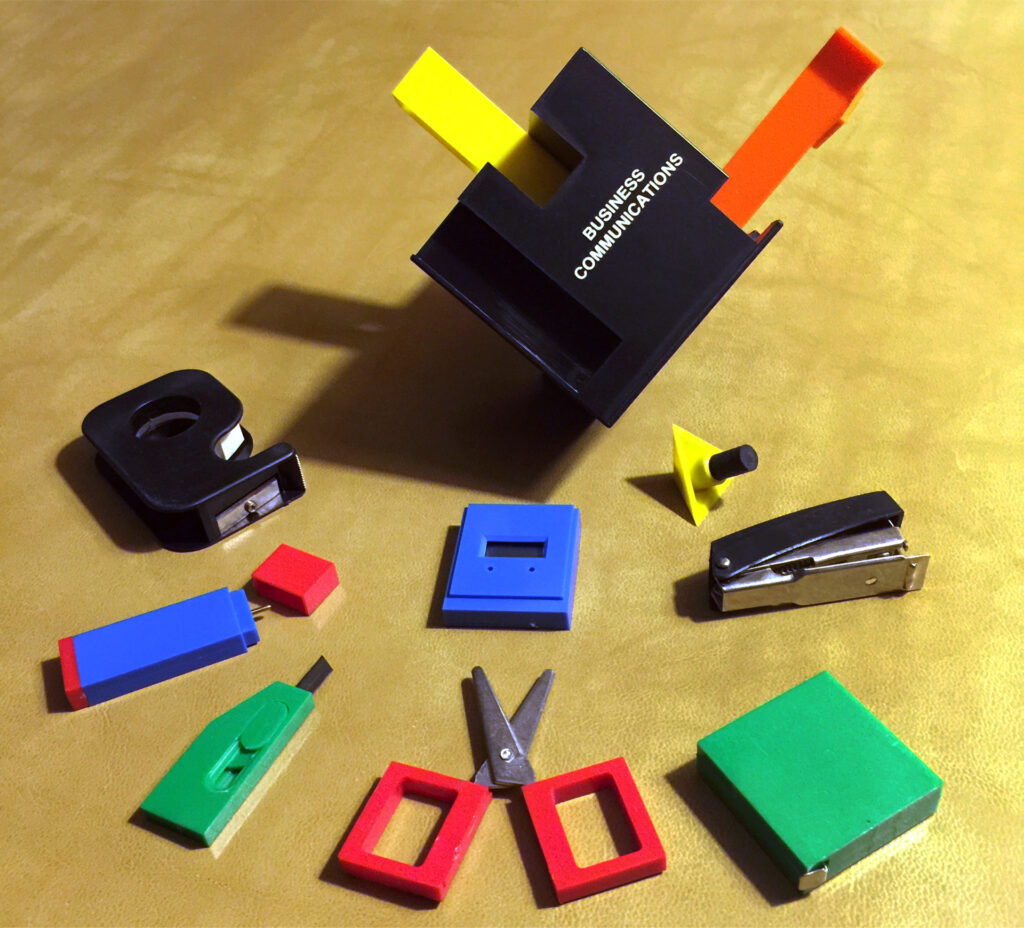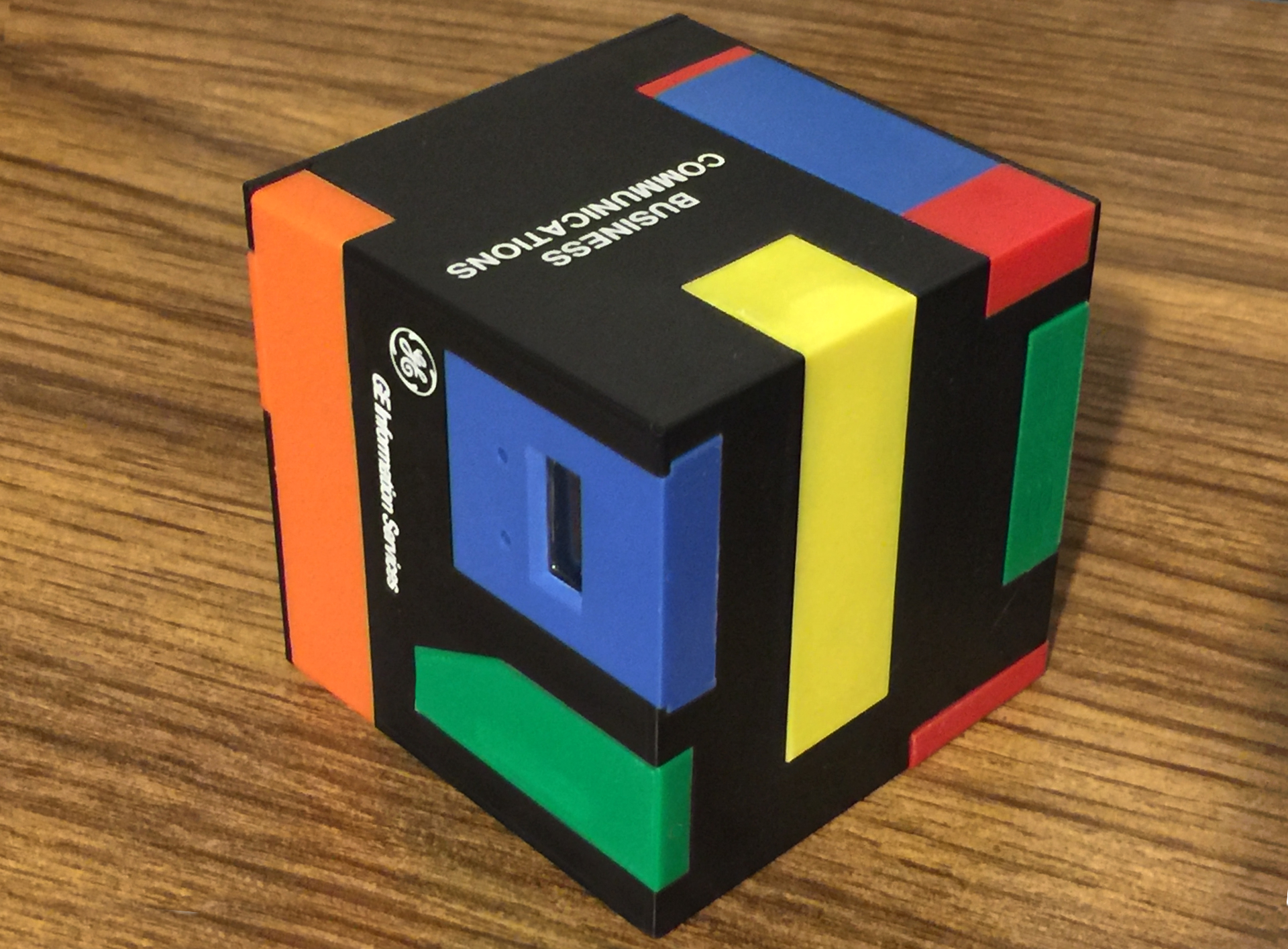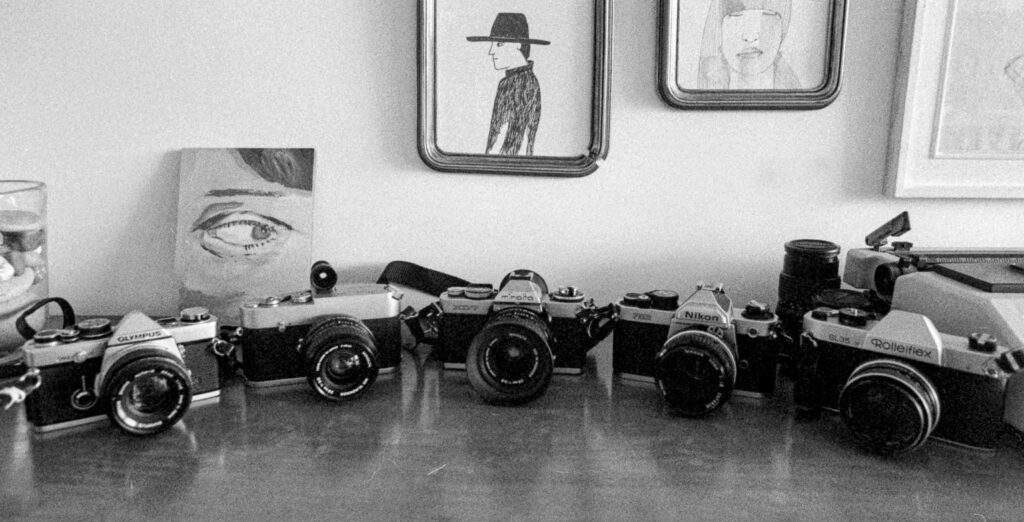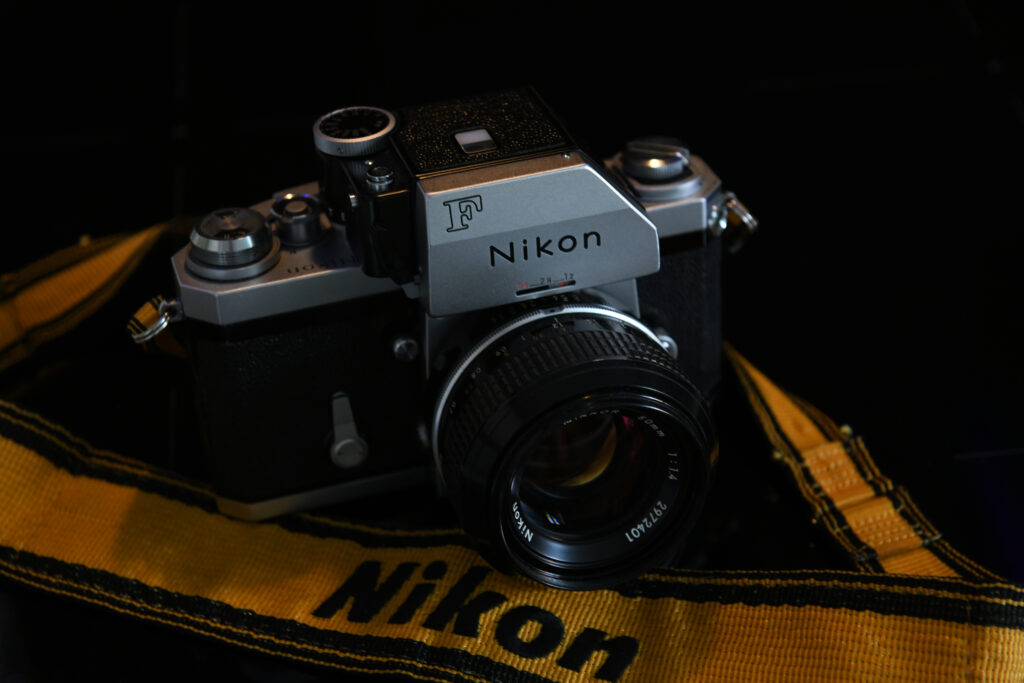I just experienced huge culture shock about that thing up there.
During the 1980s and early ‘90s, I was a computer-networking journalist and editor for publications like Minicomputer News, Networking Management and Infosecurity News. I traveled to exhibitions and press conferences around the world, and while attending events, taping interviews and collecting press kits, I occasionally picked up bits of exhibitor kitsch that appealed.
I still use a U.S. Sprint key fob that looks like a modernist pendant. And the only other giveaway I’ve kept is the above 3-inch plastic cube, which advertised GE Information Services’ “Building Blocks” technologies. I love its ingenious structure. And when contemplating how an article I’m writing should proceed, I sometimes flip the cube around in my hands to let its Mondrian-ian abstractness distract me. (It’s a cheap substitute for contemplative scholar’s rocks.)
Are You Kidding Me?
Then came my culture shock! While researching “abstract geometric sculptures” on the web, I found some auctioneers, galleries and individuals asking– and getting – more than $100 for effectively the same thing (though many online sellers still seek far less).
The cube in that link was blank, but most others became branded give-aways for businesses (including McDonald’s). Perhaps you’ve seen… or even own… one? Over the decades, it has become an iconic Postmodernist desk organizer, with nine “secret compartments” for:
- Scissors (red)
- Eraser (in a yellow corner)
- Tape measure (green)
- Ballpoint pen (open below in red and blue)
- Digital clock (blue)
- Retractable box cutter (green)
- Tape holder with built-in pencil sharpener (visible below and stored in the orange compartment)
- Mini stapler (stored in the yellow compartment)
- Colorful paper clips (stored in an open magnetic cubbyhole)
Here, it’s emptied (except for the paperclips). NOTE: The cube can stand on its corner when the eraser is removed:

There’s a lot of stuff in there!
So What Made it Collectible?
When I picked it up about 40 years ago, I thought it was just a free piece of cool industrial design. So why are some online sellers asking $100 to $400 for it today? Perhaps because it is a “Magic Cube Hidden Office Art Sculpture’’ by the American modernist architect George Matsumoto. And today, this colorful “Magic Cube” may be more widely known than any of his award-winning buildings.
More impressive still, after he joined Chicago’s Saarinen and Swanson Architects in 1946, he also helped to win a “Better Chicago Contest” to redesign the city’s entire metropolitan area. So that’s something too!
Now What About Cameras?
This makes me wonder what camera gear (including lenses) may have begun life as kitsch… only to become more respected years or decades later? I immediately think of the cheap-as-chips original Dianas and Holgas, which at one time, could be had online for pennies. And some Polaroid cameras (excluding the SX-70, of course) were sometimes thought to be photographic bottom-dwellers. But that also seems to be changing with the brand’s revival in 2017 and resurgence among new generations of photographers. (Not to overlook the fact that Fuji remained in the instant-photography business all along, after escaping a Kodak lawsuit because Fuji wasn’t HQ’d in the U.S. So Fuji Instax products also became, and remain, popular.)
Another brand that may not have received the attention it deserved was Casio. Occasionally, I’ve stumbled across articles like this fascinating 2020 DPreview look-back. Or this 2006 Ken Rockwell review of the company’s EX-S100 pocket camera, where he voiced this opinion about the company:
“Unlike the big brands more familiar to us photographers, it seems Casio actually had someone who knew about photography design the camera. It amazes me with its fast and fluid operation so critical for serious photography… This Casio is so well thought out and works so well it now makes me much less tolerant of the sloppy menus and operation of other brands of cameras… I’m astounded that no one has taken these Casios seriously before.”– Ken Rockwell
Rather high praise from Ken!
And right here on 35mmc, Ibraar Hussain recently shared his own confirmatory experiences with one of the company’s “High-Speed” models: the EX-ZR800.
Sadly, because too few people took their cameras seriously, Casio walked away from the photography business in 2018. But their highly innovative products are still out there. How innovative? On that page, click the link labeled “GZE-1.” It shows the company’s eye-popping “G-SHOCK” answer to cameras like the Olympus Tough. Many other Casio models on that list are just as fascinating, reasonably priced on the aftermarket, and still awaiting their respect.
But beyond equipment, what about the work of specific photographers? Who may have risen over the years from relative obscurity (or even derision) to stardom?
Please share your thoughts about all that (or your experiences with Casio cameras) in the comments below!
–Dave Powell is a Westford, Mass., writer and avid amateur photographer.
Share this post:









Comments
No comments found